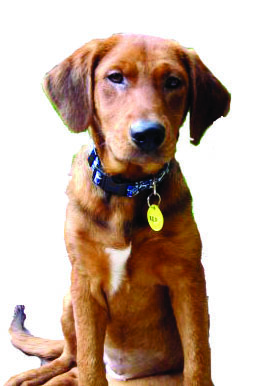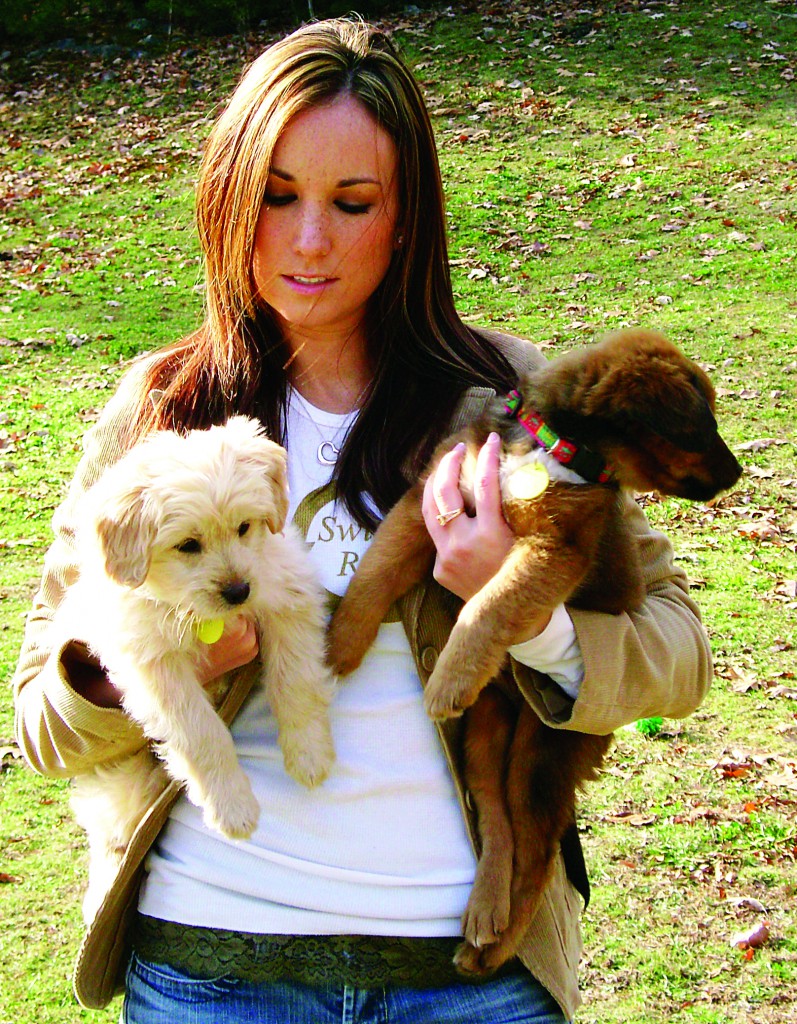PUPPY LOVE WITH KATE WHITNEY
By: Kate Whitney – October, 2012
Have you ever walked by a car heading into the grocery store, only to see a dog sitting in one, anxiously waiting for its owner to return? The car is in park, shut off, and the dog is alone. Even though this seems to be a common occurrence, it is extremely dangerous, and in this article I will tell you why. According to Petfinder.com, up to two million animals are stolen each year. Of those two million, only about 10% are returned to their owners. Heartbreak from a stolen or lost pet will work both ways, so if not for yours, please be safe for your pet’s sake.
 As we enter into the fall months, people will begin to leave their dogs in the car more frequently because they assume temperatures are cooler and there is no risk of a dog overheating. You may even hear the commonly recited line, “it’s not hot out and I’m only running in to grab something quickly.”
As we enter into the fall months, people will begin to leave their dogs in the car more frequently because they assume temperatures are cooler and there is no risk of a dog overheating. You may even hear the commonly recited line, “it’s not hot out and I’m only running in to grab something quickly.”
In my opinion (and that’s what these columns are), that should never be acceptable. The number of dog thefts is on the rise, and no matter what the temperature is, what neighborhood you’re in, or your length of stay, it is never safe to leave a dog unattended outside of the home. Maybe you have done it before, your dog was fine and nothing happened, so you continue to do it. But why take the chance? As we all know, there are numerous motives for a car being broken into. There could be a purse or wallet on the seat, a camera or briefcase in the back seat, money in the cup holder…if a thief targets a car he/she will most likely see value in something there. Studies now show one of those items on a thief’s value list is a dog. Locked or unlocked, I think we have all seen enough on the news to know that these people are desperate, and they will stop at nothing when they see something they want.
There are many other avoidable ways dogs can be dognapped. I’ve seen them wrapped around or tied up outside a coffee shop or grocery store – easy targets. Busy dog parks attract dog thieves as well. Often time’s owners are so distracted by other dogs or conversations at the park, they forget to monitor their pet.
This delay is enough time for dog thieves to swoop in. By the time the owner realizes they haven’t been paying attention, the thief has already left with their pup in tow. There have also been reports of dogs stolen out of their own backyards. Similar to the car, don’t ever put your dogs outside and then leave to go do errands. Even if your gate is locked and your fence is secure, there are obvious ways to access and exit and a dog thief only needs a few seconds to be in and out of your yard. Another word of caution, please don’t let your dog roam the neighborhood. Not only is there a risk of the dog being hit by a car or attacked by a wild animal, but there is also the risk of your dog getting picked up by a stranger.
Have you ever seen the “free to a good home” ads in the newspaper, Craigslist, or other similar sites? To some, these look like innocent advertisements from a desperate pet owner, to me these are extremely scary. Dog predators prey on ads like this. They promise a loving home with good care and will even pay a small “adoption fee” or “re-homing fee” if necessary. If you must give up your dog and the online route is the way you choose to go, please make sure you find out everything you can about the home your dog is going to.
Ask for references, have a meeting at the home, call the vet (if the person has other animals) to make sure they are a responsible dog owner. Petfinder.com also suggests making a photocopy of their picture ID, recording their driver’s license number and license plate number. If they don’t want you to do any of the above, then be skeptical of them and maybe seek out another adopter.
So where do these stolen dogs end up? The answer isn’t as cut and dry as you may think. I originally assumed that most stolen dogs were used in dog fighting rings (a lot of them are – they are used as fighters or bait dogs), but there are many other “fates” that stolen dogs often meet. Stolen dogs have been sold to research laboratories (research labs like to experiment on family pets because they tend to be docile and easy to handle), sold to breeders at puppy mills, sold to meat manufacturing plants for human (ew!) and/or exotic animal consumption, made into clothing and accessories, sold in pet stores (think that puppy in the pet store window is just from a puppy mill? WRONG, it could be someone’s stolen pet!), used for ritual sacrifice for satanic cults, used in sadistic acts, or used in crush videos. I won’t go into detail on these last three because they are absolutely vulgar. If you need clarification, just do a web search.
If you are looking for ways to help prevent the theft of your pet and others out there, here are some easy ways. Always adopt animals from shelters.
All shelters have a “stray hold” which means a dog must be held for a certain number of days before the animal can be adopted or put to sleep, with the hope that the original owner will find the dog. Never buy from retail pet stores, as reports show that some stores sell stolen pets. Make sure to spay or neuter your dogs, as experts believe that fixed dogs are less likely to stray from home. If you are a dog owner, be certain that your dog has a collar with ID tags, is micro-chipped, and even tattooed (vets can do this when your dog is under anesthesia during a spay or neuter).
The easiest way you can help prevent dog theft can be done right when you are done reading this article, through spreading the word. Educate family, friends, and neighbors about pet theft and what they must do to keep their animals safe. You’d be surprised…many people don’t know about the potential dangers that are lurking right around the corner.

